Buildings to look out for in 2015
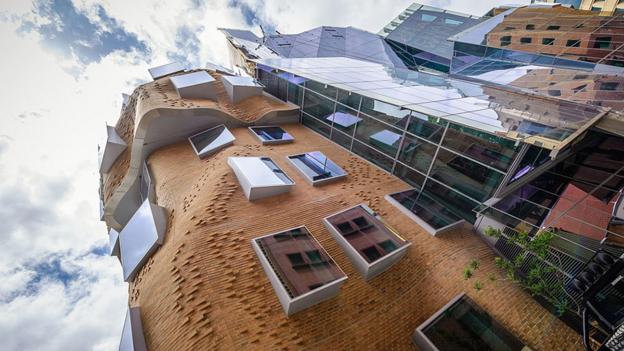
Frank Gehry’s Dr Chau Chak wing for Sydney University’s UTS Business School (Hpeterswald/Wikipedia/CC BY-SA 4.0)
Jonathan Glancey picks a selection of exciting new architectural projects that are planned for the coming year.
Proving that he is still ahead of his game, 85-year-old Frank Gehry’s Dr Chau Chak wing for Sydney's UTS Business School – his first building in Australia – is due to open in February: the curvaceous design was completed comfortably ahead of time in 2014.
“Thinking of it [as] a tree house came tripping out of my head”, says Gehry, “a growing, learning organism with many branches of thought”. The “branches” of the building, close to Sydney’s Central Business District, are given over to informal meeting and seminar spaces with principal rooms gathered in the “trunk” of this sandstone coloured structure.
Perhaps surprisingly for an architect whose most striking buildings have been fabricated in titanium and stainless steel, Gehry’s latest is clad in hand-laid bricks, 320,000 of them. Speaking to The Australian, the architect says, “I think when the university hired me they expected a shiny metal building. I made some shiny metal models, but they were things I had already sort of worked over and done. I just felt that it should be a material like in the neighbourhood.”
The result is a fascinating marriage of the latest digital design techniques and age-old craftsmanship, a relationship proving how in 2015 it is possible to be up-to-the-nano-second and comfortably bedded in architectural history, taking us back some 7,000 years ago when hand-made, hand-laid bricks shaped the world’s very first architectural monuments.
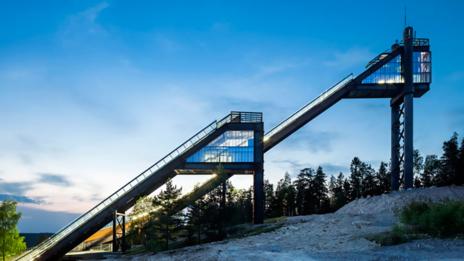
Corten – concept drawing (Tim Meier/Sweco Architects)
Despite its crusty patinated finish, and apparently age-old character, Corten steel is a material architects added to their palettes as recently as the 1960s. With its orange-red ochre surface, it is painterly as well as strong. For two weeks from mid-February, ski enthusiasts will flock to Falun, Sweden, for the FIS World Ski Championships. Some of the most exciting events will centre on the equally thrilling Corten steel ski jumps first opened here in 1974.
Sweco Architects, a practice based in Uppsala, and including Kurt Evans Sonehag, who worked on the original designs, have been charged with bringing these twin structures up to date without losing their 1970s appeal. New stainless steel and glass balustrades, renovated concrete and timber observation galleries and strip lighting have enhanced these popular Corten steel landmarks. Simple, elegant, sculptural and connected to the past while looking to a sporting future, these structures – while not as sensational as Zaha Hadid’s 2002 ski-jump at Bergisel, Austria – are likely to enjoy universal appeal.
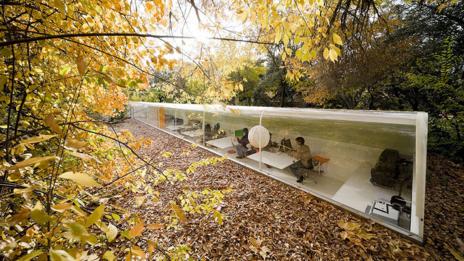
Selgas Cano studio (Iwan Baan)
The Madrid architects, SelgasCano, founded by Jose Selgas and Lucia Cano in 1998, will be aiming at maximum public appeal, as well as artistic integrity, this summer with their design for the 15th Serpentine Gallery Pavilion in London’s Kensington Gardens. Previous pavilions have been designed by, among others, Zaha Hadid and Frank Gehry. Quite what the Spanish team will dream up, we will have to wait until February to find out. They have said, “We are going to use only one material as a canvas…Transparency. That ‘material’ has to be explored in all its structural possibilities, avoiding any other secondary material that supports it, and the most advanced technologies will be needed to accomplish that transparency. A good definition for the pavilion can be taken from J M Barrie: it aims to be a “Betwixt-and-Between”. This refers to Peter Pan whose statue can be found in Kensington Gardens, and who was, or so he was told by a crow, half human and half bird.
SelgasCano’s own studio – a transparent acrylic tunnel set in a Madrid woodland with a brightly coloured, ’60s-style interior – gives the strongest clue of what Peter Pan, and tens of thousands of visitors might expect to see conjured in Kensington Gardens this summer. "SelgasCano”, says the Serpentine Gallery, “are architects for our time who offer a tantalising vision of the future. Their innovative use of materials, bold application of colour, informed by playfulness and a passion for nature ensures that next summer's pavilion will be very exciting.”.
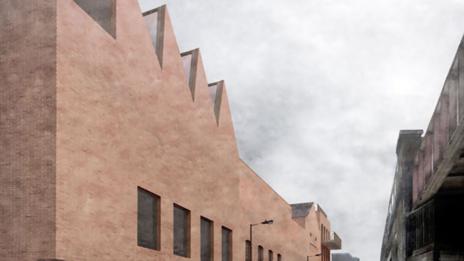
A concept drawing of Newport Street Gallery (Caruso St John Architects)
London’s art world might also enjoy a new gallery in Lambeth, south London, housing the collection of 49-year-old YBA Damien Hirst in three listed warehouses – formerly used for theatre carpentry and scenery production – and two new buildings converted and designed by Caruso St John, masters of innovative, and beautiful, brick construction and architects of the long-term renovation of Tate Britain. The Newport Street Gallery, due to open in the late spring or early summer, will occupy one side of a entire street housing more than two thousand artworks by, among others, Francis Bacon, Jeff Koons, Sarah Lucas and Bansky. It will include a restaurant – pickled shark, anyone? – and shop.
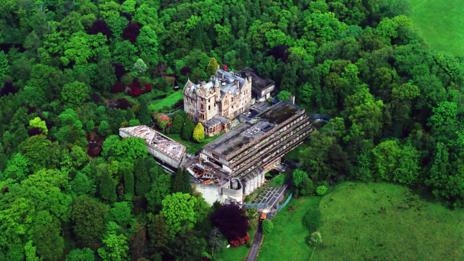
Cardross – an aerial photo of site (Gutherie Aerial/Avanti Architects)
In Scotland, one of the most unusual and dramatic arts venues will begin taking shape in 2015. This will be housed in the magnificent, yet tragic, ruin of St Peter’s Seminary, Cardross, the short-lived masterpiece of the Glasgow-based architectural practice, Gillespie, Kidd & Coia, and, in particular of Andy Macmillan and Isi Metzstein. Owing a debt to the late works of Le Corbusier, this highly expressive building complex, at once ancient and modern, opened in 1966 just in time for the Roman Catholic Church to decide that priests should no longer be trained in out-of-town seminaries. It fell into disuse and decay, eventually becoming a haunt for artists, vagrants, thrill-seekers and urban explorers.
Hidden in overgrown woodland, this most moving of modern ruins is now about to be transformed into an arts centre with a 600-seat performance venue, exhibition galleries and teaching spaces. Avanti Architects, which has a long track record of rescuing Modern Movement buildings that have lost their way, was appointed in 2011, but agreement over the funding of the £7.3m ($11.4m) project, fronted by the Scottish charity NVA, has only recently been agreed. According to Angus Farquhar, NVA’s creative director, “The charity’s plans represent an unheralded form of regeneration; one that accepts loss and ruination as part of the site history.”
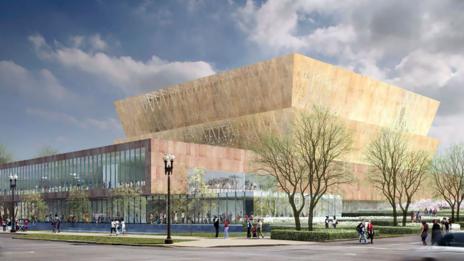
The Smithsonian National Museum of African American History and Culture in Washington (Freelon Adjaye / Smith Group)
In the long shadow of the Washington Monument, the Smithsonian National Museum of African American History and Culture, a spirited $500m (£320m) contemporary monument designed by David Adjaye working with US architects The Freelon Group and Davis Brody Bond, is due to open this year. Set half above and half below ground, the tiered building is clad in a ornamental bronze lattice, modulated, say the architects “to control the amount of sunlight and transparency into the interior.” Entry is through a deep porch with a pool designed to cool the air and to create a play of reflections and shadows. Visitors will be guided – by the architecture – to explore the darker sides of African American history, including loss and ruination, before ascending into light-filled upper galleries and up to “unrivalled panoramas of the Mall, Federal Triangle buildings and Monument Grounds.”
Here is a building connecting history and a people’s culture, as well as arts and crafts, with the present day. Architecture is often at its most profound, and most popular too, when it proves its enduring value across generations. The best new buildings of 2015, no matter what style their architects adopt, and no matter how transient – ideas survive as much as bricks and mortar – will aim to prove just this.
Cultural Calendar
Featured Video
Film premiere in Berlin makes headlines
Pop star on sex, music and performance
1920 German film restored to original
The new film is an Oscar contender
Why people still love Northern Soul
Europe’s new architecture
New documentary claims you can



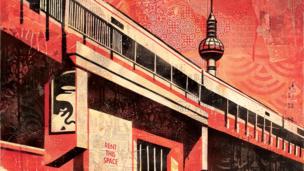




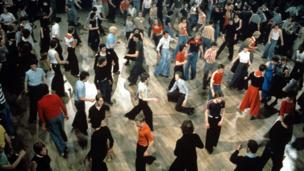

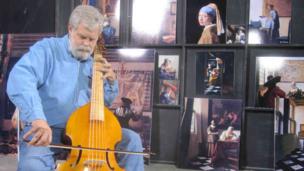
No comments:
Post a Comment
Please leave a comment-- or suggestions, particularly of topics and places you'd like to see covered